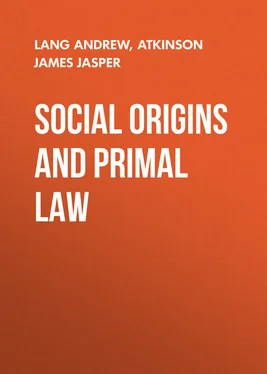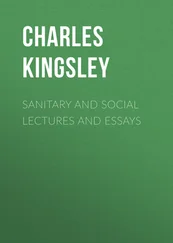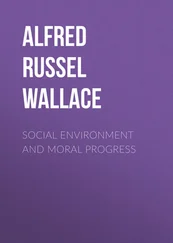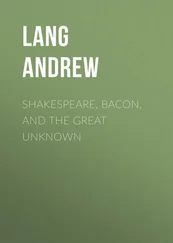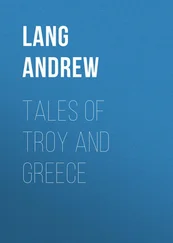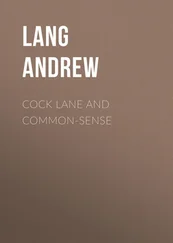Andrew Lang - Social Origins and Primal Law
Здесь есть возможность читать онлайн «Andrew Lang - Social Origins and Primal Law» — ознакомительный отрывок электронной книги совершенно бесплатно, а после прочтения отрывка купить полную версию. В некоторых случаях можно слушать аудио, скачать через торрент в формате fb2 и присутствует краткое содержание. Жанр: foreign_antique, foreign_prose, на английском языке. Описание произведения, (предисловие) а так же отзывы посетителей доступны на портале библиотеки ЛибКат.
- Название:Social Origins and Primal Law
- Автор:
- Жанр:
- Год:неизвестен
- ISBN:нет данных
- Рейтинг книги:3 / 5. Голосов: 1
-
Избранное:Добавить в избранное
- Отзывы:
-
Ваша оценка:
- 60
- 1
- 2
- 3
- 4
- 5
Social Origins and Primal Law: краткое содержание, описание и аннотация
Предлагаем к чтению аннотацию, описание, краткое содержание или предисловие (зависит от того, что написал сам автор книги «Social Origins and Primal Law»). Если вы не нашли необходимую информацию о книге — напишите в комментариях, мы постараемся отыскать её.
Social Origins and Primal Law — читать онлайн ознакомительный отрывок
Ниже представлен текст книги, разбитый по страницам. Система сохранения места последней прочитанной страницы, позволяет с удобством читать онлайн бесплатно книгу «Social Origins and Primal Law», без необходимости каждый раз заново искать на чём Вы остановились. Поставьте закладку, и сможете в любой момент перейти на страницу, на которой закончили чтение.
Интервал:
Закладка:
Dr. Durkheim, in the passage cited, says that the two exogamous phratries are composed of 'two elementary totem groups, également exogames .' 119 119 L'Année Sociologique , v. 92.
Dr. Durkheim, who here is of my opinion, writes, 'It is not true that, among the Arunta, the totem has always been' (as it is now) 'without influence on marriages, nor, above all, is it true that Totemism, generally, implied endogamy.' Yet, according to Arunta myth, the ancestors of the 'dream-time' ( Alcheringa ) were endogamous, as a general rule, and, as a general rule, were endophagous, ate their totem animals or plants. The ancestors of their traditions fed on their own totems, 'as if by a functional necessity,' say Messrs. Spencer and Gillen. But this simply cannot be true, for each totem is not in season, (plums, for instance), or accessible, all the year through, and, if it were, it would be exterminated by endophagy. The traditions, again, do not represent the men of the totem groups as really and religiously endogamous. They exercised marital privileges, not only over the women of their totem group, but over any other woman they could come across. Certain totem groups are represented in the legends as wandering across the land, the men living with women of their totem group, while 'there is nothing to show definitely that marital relations were prohibited between individuals of different totems.' The men accepted the caresses of such women of other totems as they encountered; but their habitual mates were the women of their own totem. 120 120 Spencer and Gillen, p. 419.
In the alleged state of perpetual trek , the wives were naturally, in the opinion of the myth makers, of the group. At present an Arunta marries in or out of his totem; as he pleases.
THE RELATIONS OF TOTEMS AND 'PHRATRIES' AMONG THE ARUNTA
The relations of the totem groups to the 'primary divisions,' or 'phratries,' among the Arunta and cognate tribes, are, as we have already stated, entirely peculiar. We have seen that, in North America, and in Australia generally, no phratry ever contains the same totems as its linked phratry, and we have seen that Mr. Frazer calls this the natural arrangement. 121 121 J. A. I. , N.S., i. 285.
If so, the present Arunta arrangement is not natural; it is a divergence from the natural type. Among the Arunta, 'no totem is confined to either moiety' ('phratry') 'of the tribe.' There is only 'in each local centre a great predominance of one moiety.' 122 122 Spencer and Gillen, p. 120.
Dr. Durkheim regards the present state of Arunta affairs (the totems not being peculiar to either phratry) as une dérogation . Originally, he thinks, as among the Urabunna, each phratry contained only totems which were not in the other phratry; and he detects survivals, among the Arunta, of the earlier usage. At present the Arunta totems show 'a slight tendency to skip' ( chevaucher ) 'from one into the other phratry, doubtless because the Arunta totem system is no longer complete' – and no wonder, as Arunta totems are now not hereditary, but derived from the totem souls haunting each locality. Again, in Arunta legend, the ancestors 'were divided into companies, the members of which bore the same totem name, and belonged as a rule to the same moiety' ('phratry') 'of the tribe,' as now among the Urabunna, 'who are in a less developed state than the Arunta.' So say Messrs. Spencer and Gillen, and thus Arunta legend points to a past in which Arunta usage was, in this matter, as a rule the same as that of the less developed Urabunna: which I believe it really was.
But we can hardly accept the legends when they fit, and reject them when they do not fit, our theory! I lay no stress on the legends.
Конец ознакомительного фрагмента.
Текст предоставлен ООО «ЛитРес».
Прочитайте эту книгу целиком, купив полную легальную версию на ЛитРес.
Безопасно оплатить книгу можно банковской картой Visa, MasterCard, Maestro, со счета мобильного телефона, с платежного терминала, в салоне МТС или Связной, через PayPal, WebMoney, Яндекс.Деньги, QIWI Кошелек, бонусными картами или другим удобным Вам способом.
1
Man, Past and Present , Cambridge, 1899, pp. 396, 397.
2
Royal Commentaries , i. 47.
3
The Import of the Totem , Amer. Ass., Detroit, 1897.
4
M. Chaffanjon, Tour du Monde , 1888, lvi. 348.
5
Ethnology , pp. 9, 11.
6
The International Quarterly , Dec. – March, 1902-1903, p. 321.
7
Dr. Munro, Archæological Journal , vol. lix. no. 234, pp. 109-143: ( Tire à part , p. 1.) See also later, Hypothetical Early Groups .
8
To this point, hostility, I return later.
9
Dr. Munro, Archæological Journal , vol. lix. no. 234.
10
Munro, Archæological Journal , vol. lix. no. 234, p. 22.
11
Ibid. p. 32.
12
Ibid. p. 18.
13
Ibid. p. 20.
14
Ibid. p. 22.
15
L'Anthropologie, Mars-Avril, 1902. For a brief bibliography of the bull-roarer see Mr. Frazer, The Golden Bough , iii. pp. 423-4, note 1.
16
Journal and Proceedings Royal Society N.S.W. , vol. xxviii. p. 305. See also Roth, Ethnological Studies , pp. 132-138. 1897.
17
Ancient Law p. 132.
18
Major Kennedy's portrait of 1750-1760 represents him in Macdonnell tartan. He was an agent of Prince Charles.
19
Early History of Institutions , pp. 310, 311.
20
Westermarck, History of Human Marriage , pp. 53-57.
21
Mr. John Mathew declares that 'jealousy is a powerful passion with most aboriginal husbands' in Australia. Messrs. Spencer and Gillen, on the other hand, represent the aboriginal husband as one of the most complacent of his species, jealousy being regarded as 'churlish.' Messrs. Spencer and Gillen are decidedly the better authorities. Mathew, Jour. Roy. Soc. N.S.W. , xxiii. 404. Westermarck, p. 57. Native Tribes of Central Australia , p. 99.
22
Studies in Ancient History , 1876, p. 41.
23
The late Major Powell, of the American Bureau of Ethnology, used gens of a totem kin with descent in the male line, clan of such a kin with descent in the female line, and his school follows him. Mr. Howitt, on the other hand, uses 'horde' for a local community with female, 'clan' for a local community with male descent.
24
'The Seri Indians,' by W. J. McGee. Report of Bureau of American Ethnology , Washington, 1898.
25
Интервал:
Закладка:
Похожие книги на «Social Origins and Primal Law»
Представляем Вашему вниманию похожие книги на «Social Origins and Primal Law» списком для выбора. Мы отобрали схожую по названию и смыслу литературу в надежде предоставить читателям больше вариантов отыскать новые, интересные, ещё непрочитанные произведения.
Обсуждение, отзывы о книге «Social Origins and Primal Law» и просто собственные мнения читателей. Оставьте ваши комментарии, напишите, что Вы думаете о произведении, его смысле или главных героях. Укажите что конкретно понравилось, а что нет, и почему Вы так считаете.
